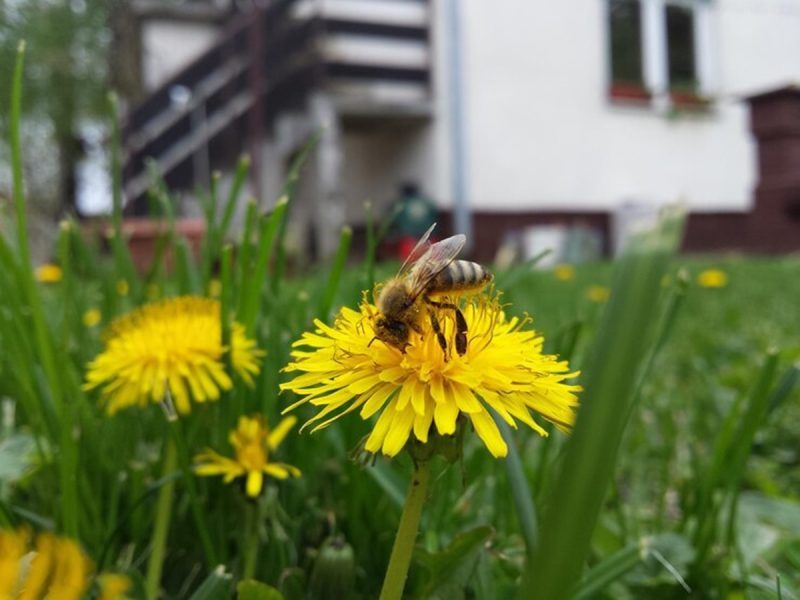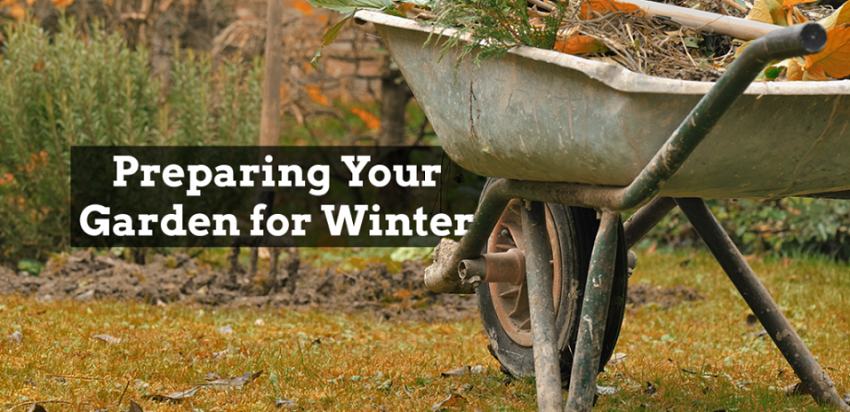The scorching sun, humid climate, and occasional bouts of heavy rain can wreak havoc on even the most resilient turf. But fear not because we’re here to help you discover the ultimate green oasis amidst the unique challenges of the Sunshine State. When it comes to types of Florida grass, knowledge is power and armed with the right information. You can transform your yard into a vibrant, envy-inducing paradise. In this article, we’ll delve into the diverse grass types in Florida and unveil the top picks that will make your neighbors green with envy. Get ready to unlock the secrets to a lush, flourishing lawn that will withstand the elements and elevate your outdoor living experience to new heights.
Warm-Season Grasses
Florida’s warm and tropical climate calls for grass varieties that thrive in hot and humid conditions. Here are some popular warm-season grasses for Florida lawns:

St. Augustinegrass
Overview of St. Augustinegrass: St. Augustinegrass is a widely used and popular grass variety in Florida due to its excellent tolerance to heat and humidity. It has a lush, green appearance and a medium to coarse texture. In the summertime, St. Augustinegrass may even produce succulent yellow flowers, adding a touch of vibrant color to your lawn.
Advantages of St. Augustinegrass: St. Augustinegrass excels in its ability to establish quickly, making it a great choice for homeowners looking for fast results. It also exhibits good shade tolerance, making it suitable for lawns with partial shade.
Popular St. Augustinegrass varieties in Florida: Some popular St. Augustinegrass varieties in Florida include Floratam, Palmetto, and Seville.
Zoysiagrass
Overview of Zoysiagrass: Zoysiagrass is another warm-season grass that performs well in Florida’s climate. It has a dense growth pattern and fine-textured blades, giving lawns a manicured look.
Advantages of Zoysiagrass: Zoysiagrass is highly drought-tolerant and has excellent wear resistance, making it a top choice for high-traffic areas. It also exhibits good salt tolerance, making it suitable for coastal regions.
Popular Zoysiagrass varieties in Florida: Some popular Zoysiagrass varieties in Florida include Empire, El Toro, and Jamur.
Bermudagrass
Overview of Bermudagrass: Bermudagrass is a warm-season grass known for its exceptional heat tolerance and aggressive growth. It has a medium to fine texture and provides a dense, lush carpet-like appearance.
Advantages of Bermudagrass: Bermudagrass is highly adaptable and thrives in full sun. It recovers quickly from damage and is well-suited for high-traffic areas. It is also resistant to drought and has good salt tolerance.
Popular Bermudagrass varieties in Florida: Some popular Bermudagrass varieties in Florida include Tifway 419, Celebration, and Latitude 36.
Bahiagrass
Overview of Bahiagrass: Bahiagrass is a warm-season grass commonly used for lawns in Florida, particularly in the northern regions. It has a coarse texture and is known for its excellent heat and drought tolerance.
Advantages of Bahiagrass: Bahiagrass is low-maintenance and requires minimal fertilizer and water compared to other grass varieties. It is also resistant to disease and pests, making it an ideal choice for homeowners seeking an environmentally friendly option.
Popular Bahiagrass varieties in Florida: Some popular Bahiagrass varieties in Florida include Pensacola, Argentine, and Paraguay.
Centipedegrass
Overview of Centipedegrass: Centipedegrass is a warm-season grass that thrives in Florida’s sandy soils. It has a medium texture and light green color, giving lawns a natural and attractive appearance.
Advantages of Centipedegrass: Centipedegrass requires low maintenance and minimal fertilization. It has excellent shade tolerance, making it suitable for lawns with partial shade. It also exhibits good resistance to insects and diseases.
Popular Centipedegrass varieties in Florida: Some popular Centipedegrass varieties in Florida include Common Centipede and TifBlair.
Cool-Season Grasses
While warm-season grasses dominate Florida lawns, some homeowners prefer cool-season grasses that thrive during the relatively milder winters. Here are a few cool-season grass options for Florida lawns:
Tall Fescue
Overview of Tall Fescue: Tall Fescue is a cool-season grass that performs well in northern Florida. It has a coarse texture and a dark green color.
Advantages of Tall Fescue: Tall Fescue exhibits good heat and drought tolerance, making it suitable for regions that experience temperature variations. It also has good wear resistance and can recover well from damage.
Popular Tall Fescue varieties in Florida: Some popular Tall Fescue varieties in Florida include Rebel Exeda and Rebel Shade.
Kentucky Bluegrass
Overview of Kentucky Bluegrass: Kentucky Bluegrass is a cool-season grass known for its vibrant green color and fine texture. It thrives in cooler climates and can withstand moderate foot traffic.
Advantages of Kentucky Bluegrass: Kentucky Bluegrass forms a dense turf and is highly resistant to wear and tear. It establishes quickly, providing homeowners with rapid results.
Popular Kentucky Bluegrass varieties in Florida: Kentucky Bluegrass is not as commonly grown in Florida due to its preference for cooler climates.
Perennial Ryegrass
Overview of Perennial Ryegrass: Perennial Ryegrass is another cool-season grass option for Florida lawns. It has a fine texture and an attractive dark green color.
Advantages of Perennial Ryegrass: Perennial Ryegrass germinates quickly and establishes rapidly, making it suitable for seeding warm-season lawns during winter. It also exhibits good shade tolerance.
Popular Perennial Ryegrass Varieties in Florida: Some popular Perennial Ryegrass varieties in Florida include Gulf Annual, Westerwold, and Perun.
Native Grasses
In addition to traditional grass varieties, some homeowners in Florida opt for native grasses that are well-adapted to the local environment. Here are a couple of native grass options:
Seashore Paspalum
Overview of Seashore Paspalum: Seashore Paspalum is a warm-season grass that thrives in coastal areas of Florida. It has a medium texture and an attractive dark green color.
Advantages of Seashore Paspalum: Seashore Paspalum exhibits excellent salt tolerance, making it ideal for lawns near the ocean. It requires less water compared to some other warm-season grasses.
Popular Seashore Paspalum varieties in Florida: Some popular Seashore Paspalum varieties in Florida include SeaIsle 1, SeaDwarf, and SeaIsle Supreme.
Wiregrass
Overview of Wiregrass: Wiregrass is a native warm-season grass well-adapted to Florida’s sandy soils. It has a fine texture and a light green color.
Advantages of Wiregrass: Wiregrass is highly drought-tolerant and requires minimal irrigation. It is also resistant to many pests and diseases commonly found in lawns.
Popular Wiregrass varieties in Florida: Some popular Wiregrass varieties in Florida include Pinellas, Blue-Joint, and Virginia Wild Rye.
Factors to Consider When Choosing Grass

When selecting the right type of grass in florida lawn, several factors should be taken into consideration:
Climate and Sunlight Requirements
Understanding Florida’s climate zones: Florida has a diverse climate, ranging from subtropical to tropical. It is important to choose grass varieties that are suitable for your specific climate zone.
Grasses suitable for full sun and shade: Consider the amount of sunlight your lawn receives. Some grasses perform well in full sun, while others tolerate partial shade or thrive in shaded areas.
Drought Tolerance and Water Requirements
Grasses that can withstand dry periods: Florida experiences periods of drought, so selecting grass varieties with good drought tolerance is essential. These grasses can conserve water during dry spells.
Tips for water-efficient lawn care: Implementing water-efficient practices such as proper irrigation techniques and scheduling can help conserve water while maintaining a healthy lawn.
Salt Tolerance
Grasses resistant to saltwater exposure: If you live in a coastal area, choosing grass varieties that can withstand saltwater exposure is crucial. These grasses can tolerate the salt spray and thrive in such environments.
Best options for coastal areas: Seashore Paspalum and certain Bermudagrass varieties are excellent choices for coastal regions due to their salt tolerance.
Disease and Pest Resistance
Grasses with natural resistance to common diseases: Some grass varieties have a natural resistance to diseases commonly found in Florida lawns, reducing the need for excessive pesticide use.
Pest management strategies for a healthy lawn: Proper pest management techniques, such as regular lawn maintenance and monitoring, can help maintain a healthy and pest-free lawn.
Maintenance and Mowing
Grasses with low maintenance needs: Consider the level of maintenance you are willing to invest in your lawn. Some grass varieties require more frequent mowing and fertilization, while others have lower maintenance needs.
Recommended mowing heights and frequency: Each grass variety has an ideal mowing height and frequency. Adhering to these recommendations ensures optimal health and appearance for your lawn.
Establishing and Caring for Your Florida Lawn
Once you have selected the right grass type for your Florida lawn, proper establishment and care are essential for its long-term success. Here are some key considerations:
Soil Preparation
Steps to prepare the soil for new grass: Proper soil preparation is crucial for successful grass establishment. It involves removing debris, improving drainage, and incorporating organic matter.
Soil testing and amendments: Conducting a soil test can provide valuable information about the soil’s pH and nutrient levels. Based on the results, necessary amendments can be made to optimize the soil conditions for your chosen grass variety.
Seeding vs. Sodding
Pros and cons of seeding and sodding methods: Both seeding and sodding are viable methods for establishing a new lawn. Understanding the advantages and disadvantages of each approach will help you make an informed decision.
Choosing the right approach for your lawn: Factors such as budget, time constraints, and the desired timeline for a fully established lawn should be considered when deciding between seeding and sodding.
Irrigation and Fertilization
Proper watering techniques for different grass types: Each variety has specific water requirements. Understanding these requirements and implementing proper irrigation techniques will help ensure healthy growth.
Fertilization schedules and best practices: Proper fertilization is essential for maintaining a healthy lawn. Following recommended fertilization schedules and applying the right type and amount of fertilizer at the appropriate times will promote optimal growth and color.
Weed Control
Common weeds in Florida lawns: Florida lawns are susceptible to various weeds such as crabgrass, dollarweed, and torpedograss. Identifying these weeds and implementing effective control strategies is crucial.
Strategies for effective weed control: Integrated weed management practices, including cultural practices, herbicide application, and regular maintenance, can help prevent and control weed infestations.
Lawn Diseases and Solutions
Identifying and treating common lawn diseases: Florida lawns can face challenges from brown patch, gray leaf spot, and take-all root rot. Early identification and appropriate treatment can prevent extensive damage.
Preventative measures for a healthy lawn: Maintaining proper cultural practices, such as adequate watering, proper mowing, and good soil fertility, can help prevent lawn diseases. Implementing preventive measures can contribute to a healthy and vibrant lawn.
In conclusion, choosing the right types of florida grass lawn is crucial for achieving a beautiful and vibrant outdoor space. Consider Florida’s unique climate and conditions and factors like drought tolerance, maintenance needs, and pest resistance when making your decision. By selecting from the top grass types mentioned in this article and following proper establishment and maintenance practices, you can enjoy the benefits of a lush green landscape that thrives in the Florida sun.
Enjoy your beautiful and vibrant Florida lawn!
FAQs
Q: How often should I water my Florida lawn?
A: Watering frequency depends on the grass type and prevailing weather conditions. In general, it’s recommended to water deeply but infrequently, allowing the soil to dry out slightly between watering sessions.
Q: Which grass variety is best for shady areas in Florida?
A: St. Augustinegrass is known for its good shade tolerance and can be a suitable choice for lawns with partial shade.
Q: Are there any low-maintenance grass options for Florida lawns?
A: Bahiagrass and Centipedegrass are known for their low maintenance requirements and can be great options for homeowners seeking a low-effort lawn.
Q: How often should I mow my Florida lawn?
A: The recommended mowing frequency varies depending on the grass type. In general, it’s advisable to mow when the grass reaches about one-third higher than the recommended mowing height for the specific variety.
Q: What are some common lawn diseases in Florida, and how can I treat them?
A: Some common lawn diseases in Florida include brown patch, gray leaf spot, and take-all root rot. Proper identification and treatment methods vary for each disease. It’s best to consult with a local lawn care professional or extension service for specific guidance.




